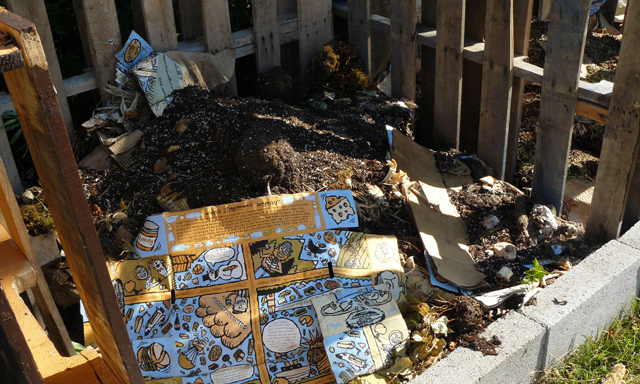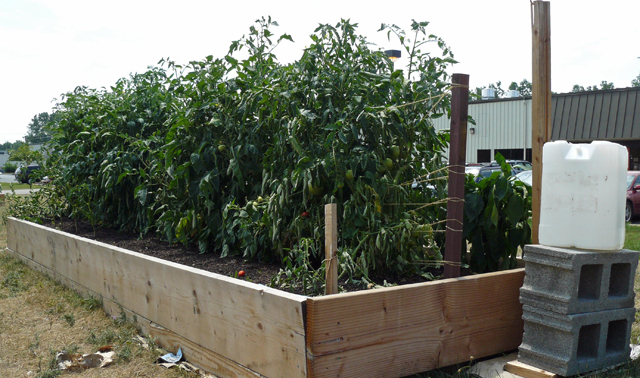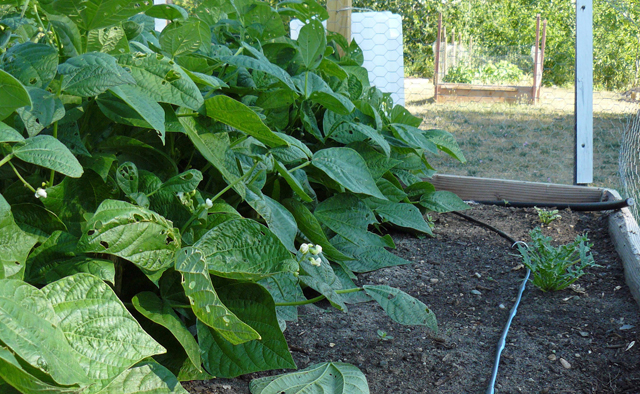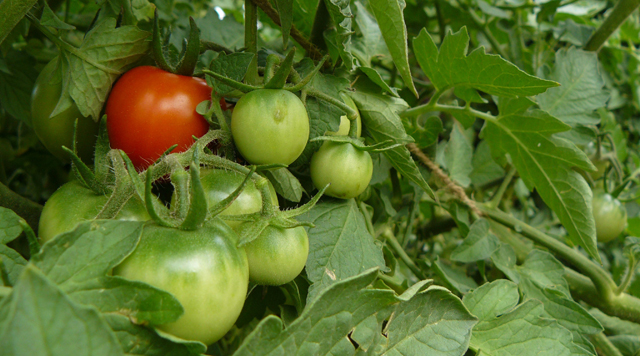Mail Order’s Vegetable Garden
This summer at Zingerman’s Mail Order, we’ve built and tended a vegetable garden in front of our warehouse. Here’s a look at what we’ve set up:

Compost
We created our compost heap in the spring from old pallets in our warehouse, and filled it with food scraps, coffee grounds, paper, and cardboard (plenty of that around here!), supplemented with horse manure from the farm of one of my coworkers. The pile is watered and turned a few times a week, and after a few months we’re starting to see some rich, earthy soil. By mid-September, the whole pile may be mature.

Raised planter beds
Also in the spring, we built six raised planter beds. We used raised beds instead of just planting in the grounds for a couple of reasons. One is that the soil around our warehouse is pretty poor quality, and we could fill the planters with much better soil. Another reason is that by using a smaller box, we’re better able to keep our water for our vegetables instead of having it leech into the dry soil and dead grass around them.

Irrigation system
Speaking of water, we’re using a drip irrigation system for all of our beds. You can see it in the photo above: the black line running through the soil is the drip tubing, which gets its water from the white plastic tub peeking out above the foliage in the center.
For some of our beds with larger plants like tomatoes, we also have an olla system in place. The olla method, which dates back over two millennia, features unglazed clay pots buried in the soil. The pots are filled with water, and that water seeps through the pots and waters the plants at their roots, providing a steady and efficient water source.

Produce!
In addition to tomatoes (we’ve got Brandywines, Peacevine Cherries, and San Marzanos, among other varieties) we have all manner of produce growing in the garden: eggplants, peppers, herbs, chard, arugula, summer squash, beans, tomatillos, rutabagas, and more. The produce is used in our employee meals, provided free to our staff every day. Leftover food scraps get added to the compost heap, and the cycle begins again.




Zingerman’s Art for Sale